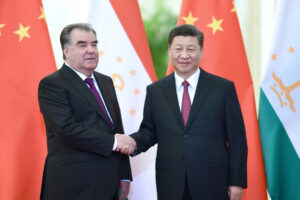China’s maize imports from South Africa will have no impact on South African maize exports to its neighbours including Namibia, Wandile Sihlobo, Chief Economist of the Agricultural Business Chamber of South Africa told Observer Money this week.
“No; South Africa has ample supplies and surplus of 3 million tonnes in the 2023/24 marketing year. South Africa’s neighbouring countries will still be able to import maize, and this won’t be disrupted by China. China remains one of South Africa’s small markets, having imported around 108 000 tonnes from South Africa in 2022/23 marketing year that ended in April, which is relatively small compared with the overall volume of 3,64 million tonnes that South Africa exported,” Sihlobo said in response to a question whether the Chinese entry into the South African maize market will disrupt exports to Southern Africa.
He added that maize price, specifically export parity price, which importing countries like Namibia and China pay is the same (without consideration of transport).
“This price is linked to the global maize price. So, the Namibian consumers need not to worry. Importantly, China’s maize imports from South Africa remains fairly small, and even if they increase, they will not have dominant impact on prices, which a function of global maize dynamics.”
Sihlobo said in the current season, South Africa expects a maize harvest of 15,9 million tonnes. He said this is sufficient to cover South Africa’s maize consumption of 11,8 million tonnes and leave around 3 million tonnes for exports in the 2023/24 marketing year which started this month, May 2023, and end in April 2024.
“So, there is sufficient maize to cover the usual shortfall in Namibia and neighbouring countries. The Chinese purchase of South African maize should not be a concern for regional supplies. We are cognisant of regional needs, and our market accounts for this,” he added.
In April, the Namibia Agricultural Union said white maize recorded the biggest harvest ever of 97 534 tonnes in the history of maize production in Namibia was recorded in 2022 surpassing that of 2021 (90 895 tonnes) by 7%. Wheat harvest also showed a record of 24 195 tonnes last year compared to 18 498 tonnes in 2021.
China bought 108 104 tonnes of maize from South Africa in the last week of March and the first few weeks of April 2023.
Statistics made available by Sihlobo showed that it was the first time South Africa saw such large volumes in recent memory.
“This is primarily because South African maize is currently competitively priced and will continue to be in demand from significant global buyers such as China.”
South Africa’s leading export markets for maize include Taiwan, Japan, Vietnam, Mexico, Italy, South Korea, Botswana, Zimbabwe, and various markets within the African continent.
China is a large maize producer, accounting for 22% of global maize production, an average of 277 million tonnes. Still, because of their significant usage, China imports maize from the world market, Sihlobo said.
Over the past three seasons, China’s maize imports averaged 25 million tonnes a year. The leading suppliers of maize to China included the United States, Ukraine, Bulgaria, Russia and Kazakhstan, and South Africa.
According to the South African Crop Estimates Committee’s latest data, maize production at 15,9 million tonnes, 3% higher than the 2021/22 season’s harvest is the third-largest harvest on record.
The soybeans harvest is estimated at a record 2,8 million tonnes with just over 300 000 tonnes of soybeans for export markets. The sunflower seed production is estimated at 797 610 tonnes (down 6% year on year).
Other small crops, such as sorghum and groundnuts, have a reasonably large expected harvest of 107 180 tonnes (up 4% year on year) and 49 080 tonnes (up by 1% year on year), respectively.
Source: Observer24
















